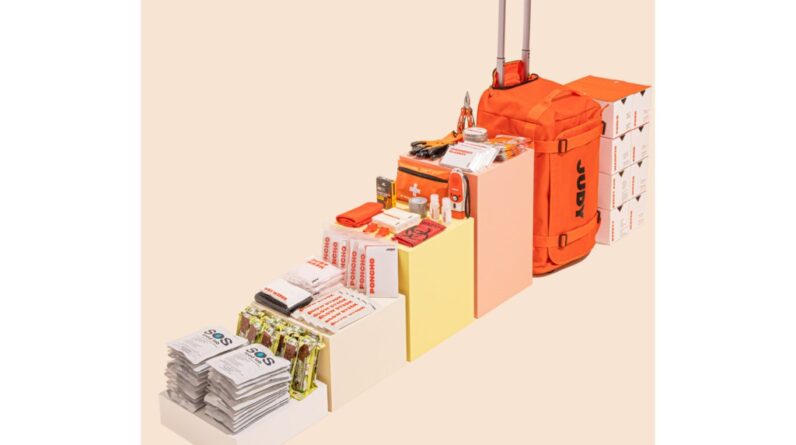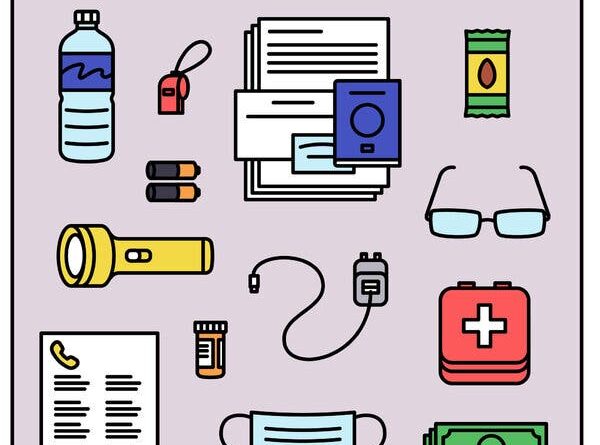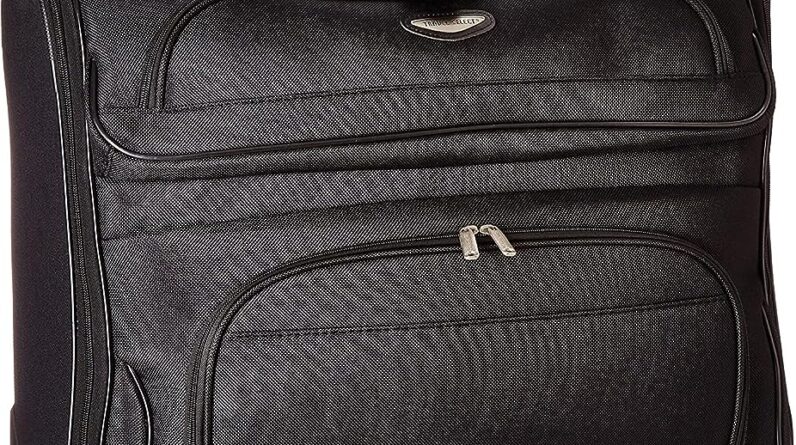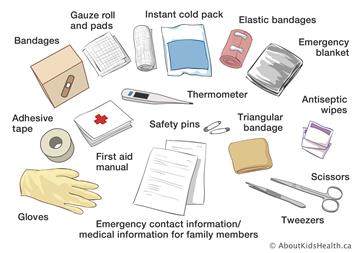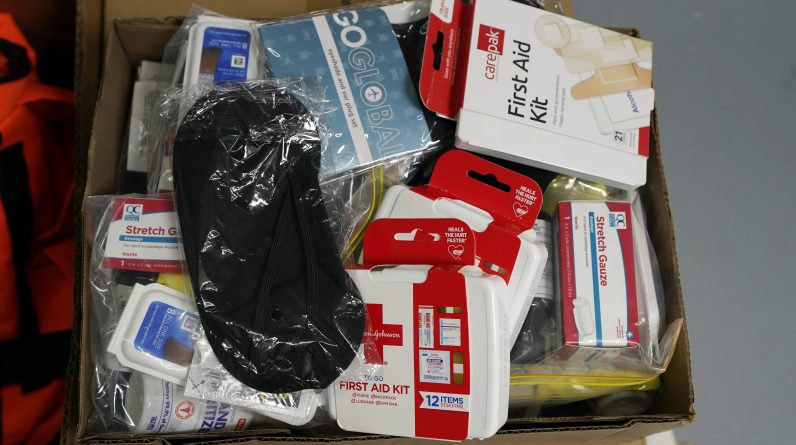
In this article, we will explore the world of tailored emergency kits and how they address the specific needs of various types of emergencies. From natural disasters to power outages and everything in between, these specialized kits are designed to provide individuals and families with the essential tools and supplies needed to navigate through different emergency situations. Discover how these tailored emergency kits can give you peace of mind and ensure you are prepared for whatever comes your way.
Tailored Emergency Kits: Meeting the Unique Needs of Different Types of Emergencies

This image is property of Amazon.com.
Introduction to Tailored Emergency Kits
In times of emergency, being prepared is crucial. Having a well-stocked emergency kit can be the difference between feeling helpless and maintaining your safety and well-being. However, not all emergencies are the same, and the needs in each situation can vary significantly. This is where tailored emergency kits come into play.
Tailored emergency kits are specifically designed to meet the unique needs of different types of emergencies. By understanding the specific requirements of various situations, we can ensure that we are equipped with the necessary tools and supplies to navigate through challenging times successfully. In this article, we will delve into the importance of tailoring emergency kits, the factors to consider when creating one, and explore specific kits for different types of emergencies.
Understanding Different Types of Emergencies
Before we can discuss the importance of tailoring emergency kits, it is essential to have a basic understanding of the different types of emergencies we may encounter. Emergencies can range from natural disasters such as earthquakes, floods, and severe weather events to power outages, medical emergencies, and even civil unrest or terrorism situations. Each of these emergencies requires unique considerations when it comes to emergency preparedness.
Importance of Tailoring Emergency Kits
Tailoring emergency kits to suit different types of emergencies is vital for several reasons. Firstly, it ensures that you have the necessary supplies and equipment to address the specific challenges posed by each emergency situation. For example, a natural disaster kit will typically include items such as sturdy footwear, protective clothing, and emergency food and water supplies, which may not be as relevant in a power outage or medical emergency scenario.
Secondly, tailored emergency kits also help optimize space and resources. By considering the specific needs of an emergency situation, you can avoid carrying unnecessary items that would take up valuable space and add unnecessary weight to your kit. This allows you to focus on items that are truly essential for the particular emergency at hand.
Lastly, having a tailored emergency kit provides peace of mind. Knowing that you are prepared for a specific type of emergency can alleviate anxiety and enable you to respond calmly and effectively during a crisis. When you have the appropriate tools and supplies readily available, you can concentrate on prioritizing your safety and that of your loved ones.

This image is property of cdn11.bigcommerce.com.
Factors to Consider when Tailoring Emergency Kits
When tailoring an emergency kit, several factors need to be considered. The first factor is the specific type of emergency you are preparing for. Each emergency comes with its own unique set of challenges, so understanding the requirements of that situation is crucial. Researching the type of emergency will help gather relevant information and determine the supplies and equipment needed.
Another important factor to consider is the duration of the emergency. Depending on its potential duration, you may need to include additional supplies such as long-term food storage, portable cooking equipment, or a means to purify water. On the other hand, if the emergency is expected to be short-term, focus on essentials that will sustain you until help arrives or the situation normalizes.
Consider the number of people your emergency kit needs to cater to. If you have a large household, you will need to ensure you have enough supplies, medications, and food for everyone. Additionally, take into account any special dietary or medical needs that require addressing.
Lastly, the geographical location of your area should also be considered. Different regions have varying risks when it comes to emergencies, such as earthquakes in seismic zones or hurricanes in coastal areas. Adapting your emergency kit to account for these specific risks will allow you to be better prepared for the potential challenges you may face.
Specific Kits for Natural Disasters
Natural disasters can strike without warning and leave a trail of destruction in their wake. Having a tailored emergency kit for natural disasters can help you navigate through these challenging times. Natural disaster kits are designed to provide essential supplies and equipment to ensure your safety and well-being in the aftermath of an event like an earthquake, hurricane, or wildfire.
Components of a Natural Disaster Emergency Kit
A comprehensive natural disaster emergency kit should include the following components:
-
Emergency Food and Water: A sufficient supply of non-perishable food items and water for at least three days per person. Opt for canned goods, energy bars, and bottled water that are easy to store and have a long shelf life.
-
First Aid Kit: A well-stocked first aid kit with essential medical supplies to treat minor injuries and provide initial care until professional medical help is available.
-
Emergency Lighting: Flashlights, headlamps, or lanterns with extra batteries to ensure visibility during power outages or in areas with limited lighting.
-
Emergency Communication: A battery-powered or hand-crank radio to stay updated with weather alerts, evacuation orders, or other important information.
-
Personal Hygiene Items: Include toilet paper, hand sanitizer, wet wipes, and basic toiletries in your kit to maintain cleanliness and sanitation.
-
Emergency Shelter: Tarps, blankets, or emergency sleeping bags to provide protection from the elements and maintain body heat in adverse weather conditions.

This image is property of cdn11.bigcommerce.com.
Specific Kits for Power Outages
Power outages can happen unexpectedly and may last for prolonged periods, leaving you without electricity. Having a tailored emergency kit for power outages can help you cope with the darkness and lack of essential services.
Components of a Power Outage Emergency Kit
A power outage emergency kit should include the following components:
-
Battery-powered or Hand-crank Flashlights: These will provide you with light when the electricity is down. Remember to include extra batteries or a hand-crank flashlight with a built-in power generator.
-
Power Bank or Portable Charger: A power bank allows you to charge your essential devices such as cell phones or tablets and stay connected with loved ones or emergency services.
-
Battery-powered or Wind-up Radio: Having a radio will keep you informed about the outage’s duration and updates from local authorities.
-
Non-perishable Food: Stock up on canned goods, dry snacks, and food items that do not require refrigeration or heating.
-
Manual Can Opener: If your canned goods require an opener, make sure you have a manual can opener in your kit.
-
Warm Clothing and Blankets: Prepare for potential temperature drops during prolonged power outages by including warm clothing and extra blankets to keep you comfortable.
-
Board Games or Books: Keep yourself entertained during the outage with activities that do not rely on electricity.
Specific Kits for Medical Emergencies
Medical emergencies can happen at any time, and having a tailored emergency kit can make all the difference in providing immediate assistance and stabilizing the situation until professional medical help arrives.

This image is property of taskandpurpose.com.
Components of a Medical Emergency Kit
A medical emergency kit should include the following components:
-
Basic First Aid Supplies: Adhesive bandages, gauze pads, medical tape, antiseptic wipes, and other first aid essentials should be readily available.
-
Prescription Medications: If you or any family member relies on prescription medications, ensure you have an adequate supply in your emergency kit. Rotate and replace medications as needed to avoid expiration.
-
Over-the-counter Medications: Include common over-the-counter medications such as pain relievers, antihistamines, and anti-diarrheal medicines.
-
Emergency Contact Information: Compile a list of emergency contacts, including family members, healthcare providers, and nearby hospitals or clinics. Additionally, include any relevant medical information or conditions to provide crucial details to medical professionals if needed.
-
Medical Equipment: If you or someone in your household requires specific medical equipment, such as insulin for diabetes or an inhaler for asthma, make sure you have a backup readily available in your emergency kit.
-
Medical Documents: Keep a copy of important medical documents, insurance information, and identification cards with your emergency kit.
-
Emergency Blanket and Instant Heat Packs: These can provide warmth and comfort during a medical emergency, especially if a person is in shock or experiencing hypothermia.
Specific Kits for Severe Weather Events
Severe weather events such as hurricanes, tornadoes, or blizzards can be incredibly dangerous and often cause widespread devastation. Having a tailored emergency kit for severe weather events can help you stay safe and prepared.
Components of a Severe Weather Emergency Kit
A severe weather emergency kit should include the following components:
-
Weather-appropriate Clothing: Pack sturdy shoes, raincoats, gloves, hats, and other weather-specific clothing items.
-
Emergency Food and Water: As with other types of emergency kits, include a three-day supply of non-perishable food and water per person.
-
Weather Radio and Extra Batteries: Stay updated on weather conditions and important announcements by having a battery-powered or hand-crank weather radio.
-
Emergency Whistle: A whistle can be crucial for signaling for help if you become trapped or lost during severe weather events.
-
Durable Shelter Materials: Include tarps, ropes, and tents in your kit to provide temporary shelter in case your home is damaged or unsafe.
-
Basic Tools: Keep a set of essential tools such as a wrench, pliers, and a multi-purpose knife to assist with minor repairs or clearing debris.
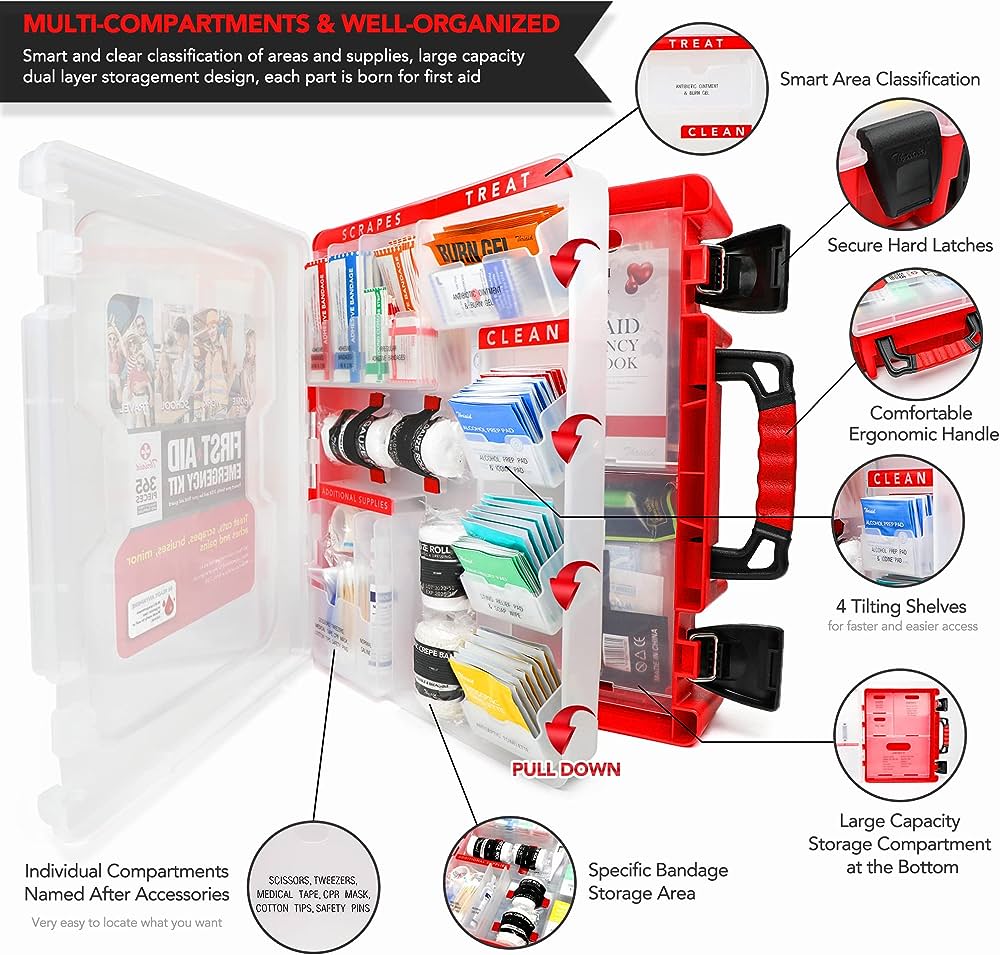
This image is property of Amazon.com.
Specific Kits for Fire Emergencies
Fire emergencies can quickly escalate and pose a significant risk to life and property. Having a tailored emergency kit for fire emergencies can help you react swiftly and stay safe in these perilous situations.
Components of a Fire Emergency Kit
A fire emergency kit should include the following components:
-
Fire Extinguisher: Include a small, portable fire extinguisher suitable for home use. Familiarize yourself with its operation and keep it easily accessible.
-
Fire Escape Plan: Prepare and practice a fire escape plan with your household members. Have a clearly labeled map of your home’s exits and designated meeting points outside.
-
Smoke Alarms and Carbon Monoxide Detectors: Ensure you have working smoke alarms and carbon monoxide detectors installed throughout your home. Check and replace batteries as needed.
-
Emergency Ladder: If you live in a multi-story building, consider having an emergency escape ladder that can be deployed from higher floors.
-
Fire-resistant Safe: Keep important documents, identification papers, and valuable items in a fire-resistant safe.
-
Emergency Communication: Include a charged cell phone with important emergency contacts saved, as well as a backup phone charger.
Specific Kits for Earthquakes
Earthquakes can strike suddenly and cause widespread destruction. Having a tailored emergency kit for earthquakes can help you and your loved ones stay safe amidst the chaos.
Components of an Earthquake Emergency Kit
An earthquake emergency kit should include the following components:
-
Sturdy Shoes: Keep a pair of sturdy shoes near your bed to protect your feet from debris if an earthquake occurs during the night.
-
Emergency Water and Non-perishable Food: Include a three-day supply of water and non-perishable food items per person.
-
Battery-powered or Hand-crank Flashlight: Ensure you have a reliable light source in case of power outages.
-
Emergency Blanket and Warm Clothing: Be prepared for potential temperature drops by including extra blankets and warm clothing.
-
Personal Protective Equipment: Include gloves and dust masks to protect yourself from potential hazards such as broken glass or dust particles.
-
Emergency Tools: Keep a wrench to shut off utilities, a multi-purpose knife, and a whistle to signal for help if needed.
Specific Kits for Flooding
Flooding can occur due to heavy rains, storms, or even dam failures. Having a tailored emergency kit for flooding can help you navigate through the dangers associated with inundated areas.
Components of a Flood Emergency Kit
A flood emergency kit should include the following components:
-
Emergency Evacuation Plan: Familiarize yourself with evacuation routes and designated safe locations in case of a flood. Keep a map of your area marked with primary and secondary evacuation routes.
-
Emergency Radio: Have a battery-powered or hand-crank radio to stay informed about flood warnings, evacuation orders, or other crucial information.
-
Emergency Food and Water: Store a three-day supply of non-perishable food and water per person.
-
Waterproof Containers: Use waterproof containers or sealable plastic bags to safeguard important documents, identification, and other essential items.
-
Sandbags or Flood Barriers: If you live in a flood-prone area, consider having sandbags or flood barriers readily available to mitigate water damage.
-
Rubber Boots and Gloves: Protect your feet and hands from potential contaminants in floodwaters by wearing rubber boots and gloves.
Specific Kits for Civil Unrest or Terrorism
In uncertain times, it is essential to be prepared for civil unrest or terrorism situations. Having a tailored emergency kit for these scenarios can help you stay safe and prepared.
Components of a Civil Unrest or Terrorism Emergency Kit
A civil unrest or terrorism emergency kit should include the following components:
-
Emergency Communication Plan: Establish a communication plan with your family or loved ones to stay connected and informed during chaotic situations. Share emergency contact information and establish meeting points.
-
Battery-powered Radio: Stay informed about local news, emergency broadcasts, and instructions from authorities.
-
Emergency Food and Water: Include a three-day supply of non-perishable food items and water.
-
Personal Safety Items: Consider including items such as pepper spray, whistles, or personal alarms for added security and protection.
-
Emergency Cash: Keep a small amount of emergency cash in your kit, as ATMs and card payments may be inaccessible during emergencies.
-
Emergency Shelter: In case you need to evacuate, include a tent or a lightweight emergency shelter in your kit.
Conclusion
Tailoring emergency kits to meet the unique needs of different types of emergencies is fundamental in ensuring our safety, comfort, and preparedness. By considering the specific requirements of each situation, we can gather the necessary supplies and equipment needed to face any crisis with confidence. Whether it’s a natural disaster, power outage, medical emergency, severe weather event, fire, earthquake, or civil unrest, having a tailored emergency kit can make all the difference in navigating through challenging times successfully. Remember to periodically review and restock your kits to ensure their effectiveness and readiness. Stay prepared, stay safe!

